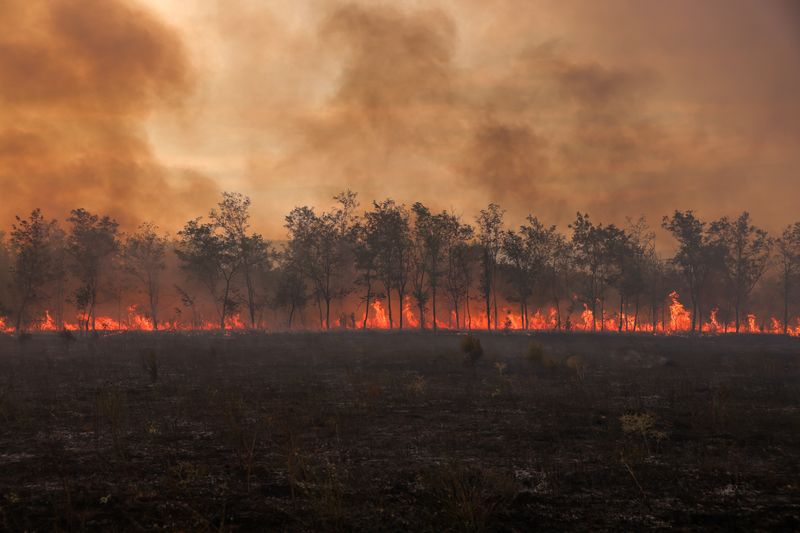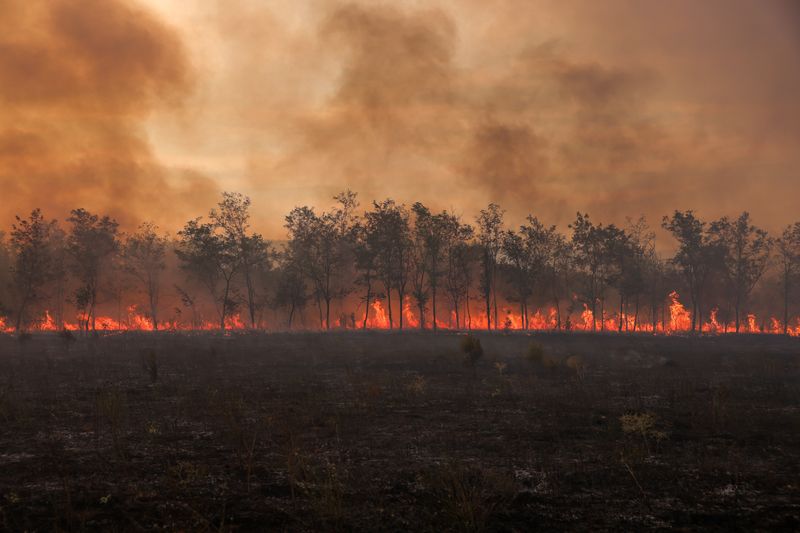By Gloria Dickie
DUBAI (Reuters) – Heat stress. Lung damage due to smoke from wildfires. The spread of disease-carrying mosquitoes to new areas as temperatures rise.
These are just some of the ways in which public health is being affected and exacerbated by climate change – a focus for the first time ever at the annual UN climate summit COP28.
Ministers are expected to discuss how to protect people from climate-related health threats, which now threaten to reverse decades of public health progress.
Experts expect that from 2030, just four of these threats – malnutrition, malaria, diarrhea and heat stress – will increase the global death toll by 250,000 per year, according to the World Health Organization (WHO).
“Extreme weather events are becoming extreme health events,” said Martin Edlund, CEO of the global non-profit organization Malaria No More.
Here’s how climate change is harming the health of people around the world today, and what countries could expect in the future.
VECTOR TRANSFERRED DISEASES
Mosquitoes that carry viruses including dengue, malaria, West Nile and Zika are moving to new parts of the world as warmer temperatures and heavy rainfall create more hospitable conditions for them to breed.
According to the WHO, reported cases of dengue have increased from about half a million in 2000 to more than 5 million in 2019.
This year, cases in Brazil are up 73% over the five-year average, Edlund says, while Bangladesh is dealing with a record outbreak of dengue.
Climate change is also having an unpredictable impact on malaria: 5 million more cases will be recorded in 2022 than the year before – for a total of 249 million, according to the WHO’s World Malaria Report.
For example, floods in Pakistan last year led to a 400% increase in malaria cases in the country, the report said.
The disease has also spread to the highlands of Africa, where it was previously cold for mosquitoes.
Two new malaria vaccines expected to be available next year offer some hope of combating the scourge.
TRAYY WATERS
Storms and floods caused by climate change also allow other contagious water-borne diseases to proliferate.
After decades of progress in the fight against cholera, an intestinal infection spread by contaminated food and water, cases are rising again, even in countries where the disease has been virtually eradicated.
Without treatment, cholera can be fatal within hours.
In 2022, 44 countries reported cases of cholera, a 25% increase from 2021, according to the WHO, which noted the role cyclones, floods and drought play in cutting off access to clean water and helping bacteria to spread. thrive.
Recent outbreaks have also been much deadlier, with death rates now at their highest levels in more than a decade, the WHO said.
Diarrhea is also getting a boost from climate change, with increasingly erratic rainfall – resulting in wet or dry conditions – posing a greater risk, research shows.
Diarrhea is the world’s second leading cause of death among children under five after pneumonia, claiming the lives of more than half a million children every year.
EXTREME HEAT AND SMOKY SKY
Heat stress – one of the most obvious health effects of global warming – is expected to affect hundreds of millions of people as temperatures continue to rise in the coming decades.
With the world already about 1.1 degrees warmer than average pre-industrial temperatures, people experienced an average of about 86 days of dangerously high temperatures in 2022, a report from the medical journal Lancet showed last month.
If the world warms 2 degrees Celsius above pre-industrial levels, the report said, annual heat deaths could more than quadruple.
A July study in the journal Nature Medicine estimated that about 61,000 people died during Europe’s summer 2022 heat waves.
The heat has also made forests drier, causing extreme wildfires that have affected much of the world in recent years.
According to a September study in the journal Nature, in the decade beginning in 2010, more than two billion people were exposed to unhealthy air pollution from fire smoke at least one day a year. That was an increase of 6.8% compared to the previous decade.
According to the American Thoracic Society, air pollution in the United States now kills between 4,000 and 28,000 people every year.

___
For daily in-depth coverage of COP28 in your inbox, sign up for Reuters Sustainable Switch (NYSE:) newsletter here.


